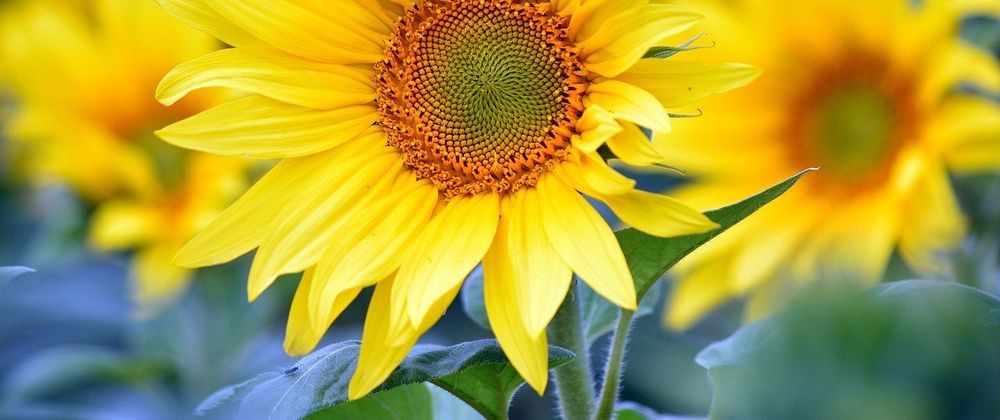Pollination is a crucial process in the life cycle of flowering plants, which not only ensures plant reproduction but also supports biodiversity and the production of fruits and seeds. Understanding the science of flower pollination provides insight into the complex interactions between plants and their pollinators, which can range from insects to birds, mammals, and even the wind. In this article, we delve deeper into the mechanisms of pollination, exploring the types of pollinators and their important role in maintaining ecosystem balance.
What is flower pollination?
Pollination is the transfer of pollen grains from the male anther of a flower to the female stigma, making fertilization possible. This process is essential for the production of seeds and fruits. Pollen grains containing the male genetic material need to reach the stigma where they will germinate and send pollen tubes to the ovary. The fusion of male and female gametes produces seeds, which are the next generation of plants. For detail flower information you can visit this site as it is great source of flowers names and facts.
Types of Pollination
Pollination can occur in two main forms: self-pollination and cross-pollination.
- Self-pollination occurs when pollen from the same flower or another flower on the same plant reaches the stigma. This type of pollination is more common in plants with both male and female organs on the same flower. This ensures that plants can reproduce even when there is a lack of pollinators, but it also reduces genetic diversity.
- Cross-pollination occurs when pollen from one flower is transferred to the stigma of a flower of another plant of the same species. This process encourages genetic diversity, making plants more adaptable to environmental changes. Cross-pollination relies heavily on external pollinators, such as bees, birds, and the wind.
Role of Pollinators
Pollinators are important agents in the pollination process. They help transfer pollen between flowers, thus enabling fertilization that leads to seed production. There are different types of pollinators, each of which plays a unique role in the flower-pollinator relationship. Below, we explore the most important pollinators and their impact on plant reproduction.
Insect Pollinators
Insects are the most common pollinators and include species such as bees, butterflies, moths, wasps, and beetles. Bees, in particular, are recognized as the most efficient pollinators due to their physical structures and behaviors, which are well adapted to collecting and dispersing pollen. Honeybees and bumblebees are prime examples of pollinators that visit flowers specifically for nectar and pollen, transferring pollen in the process.
- Butterflies and moths are also important pollinators, especially for flowers that are tubular in shape. These insects are attracted to flowers with brightly colored flowers and pleasant scents. While feeding on nectar, they may inadvertently bump into anthers, picking up pollen which is then transferred to the next flower.
- Beetles are considered less delicate pollinators, often pollinating flowers by crawling clumsily through floral structures. Although they are not as precise as bees or butterflies, beetles make important contributions to the pollination of many primitive plant species.
Bird Pollinators
Some bird species, especially hummingbirds, also play important roles in pollination. These birds are attracted to brightly colored, nectar-rich tubular flowers. As they feed on nectar, they come into contact with pollen, which is then spread from flower to flower as they move around.
Hummingbirds, with their rapid wing beats, can hover in front of flowers, allowing them to feed without landing. The position of their beaks often facilitates cross-pollination, especially in plants where other pollinators cannot reach the nectar because of the depth or structure of the flower.
Mammalian Pollinators
Although less common, some mammals also act as pollinators. Bats are important pollinators, especially in tropical and desert environments. Flowers pollinated by bats usually open at night, are often white or pale colored, and give off a strong, fruity scent that attracts these nocturnal creatures. Bats feed on flower nectar, transferring pollen as they move from one flower to another.
Pollination by wind and water
Some plants do not rely on animals for pollination. Wind-pollinated plants, such as grasses and many trees, produce large amounts of lightweight pollen that is easily carried by the wind. Water-pollinated plants drop their pollen into the water, where it drifts until it contacts another flower. Although these methods of pollination are less precise than animal-assisted methods, they are effective for plants that produce abundant pollen.
Floral adaptations for pollinators
Over time, flowers have developed specific traits to attract their preferred pollinators and ensure their effectiveness. These traits, known as pollination syndromes, are adaptations that increase the chances of successful pollination.
**Color and odor
**Different pollinators are attracted to specific colors and odors. For example, bees are attracted to flowers that are blue or yellow and have a slight fragrance. In contrast, moths and bats are attracted to yellow or white flowers with strong scents that are strongest at night. Floral scent is important in guiding some insects, especially those that are active at dusk or dawn when visibility is limited.
**Shape and size
**Flowers also change their shape and size to suit their pollinators. For example, tubular flowers are suitable for butterflies and hummingbirds, which have long feeding structures, while flat, open flowers are ideal for insects such as bees and beetles that like to land while feeding.
**Nectar guides
**Many flowers have nectar guides, which are visible patterns that lead pollinators to the nectar source. These guides, which are often visible in ultraviolet light, help pollinators efficiently figure out where to land and feed, ensuring that they come into contact with the flower's reproductive organs.
Pollination and Its Ecological Importance
The pollination process is essential for more than just plant reproduction. It has far-reaching ecological and economic implications, as about 75% of the world's flowering plants rely on pollinators for reproduction. Additionally, pollination supports the production of fruits and vegetables, many of which are important to the human diet. Crops such as apples, almonds, and tomatoes depend on pollinators to achieve high yields, making pollination a cornerstone of global food security.
Threats to Pollinators
Despite their importance, pollinators face many threats, including habitat loss, pesticide use, climate change, and the spread of diseases. These factors have contributed to the decline of pollinator populations worldwide, especially among bees. The reduction of natural habitats and the use of chemicals in agriculture have disrupted the delicate balance needed to maintain healthy pollinator populations.
Conclusion
The science of flower pollination is a complex and fascinating process that underscores the importance of pollinators in maintaining ecosystems and ensuring the survival of countless plant species. Understanding the role of different pollinators, from bees and butterflies to birds and bats, reveals the complexity of the interactions that sustain life on Earth. By protecting pollinators and their habitats, we can preserve biodiversity and continue to enjoy the benefits of flowering plants in our daily lives.



Top comments (0)